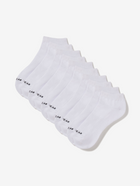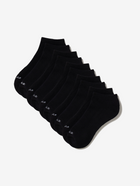In an era where sustainable fashion is becoming increasingly vital, the textile industry is experiencing a transformative shift toward natural fibers. The fabric revolution is not just about redefining your wardrobe but also about embracing eco-conscious choices that benefit both you and the planet.
The Historical Significance of Natural Fibers
Let's take a step back in time to unravel the incredible history of natural fibers. These classic materials have been at the heart of fashion for centuries, shaping our clothing choices and cultures along the way. Join us on this journey through the ages, where cotton, silk, linen, and more have played pivotal roles in our style evolution.
The Rich History of Natural Fibers in Clothing
Ancient Textiles: Natural fibers have been the cornerstone of clothing throughout human history. Ancient civilizations, such as the Egyptians, Greeks, and Romans, relied heavily on these materials.
Cultural Diversity: Across cultures, various natural fibers were cultivated and woven into distinctive textiles. From the flax-based linen of the Mediterranean to the luxurious silks of China, each region had its own textile traditions.
Timeless Appeal: The enduring appeal of these natural fibers lies in their unique properties. Cotton's breathability, silk's lustrous sheen, and linen's lightweight comfort have made them staples of fashion through the ages.
Symbols of Tradition, Comfort, and Style
Cultural and Social Significance: Natural fibers often carried profound cultural and social significance. For example, in ancient India, silk was associated with royalty and wealth, while the use of wool in European noble garments symbolized power and prestige.
Tradition and Innovation: These fabrics have not only represented tradition but also innovation. The development of new weaving techniques and dyeing methods showcased humanity's creativity and craftsmanship.
Timeless Elegance Meets Modern Fashion Trends: Today, these classic natural fabrics continue to influence modern fashion. Designers draw inspiration from traditional textiles to create contemporary clothing that seamlessly blends timeless elegance with current fashion trends.
The Rise of Synthetic Fabrics
As the world marched forward, seeking innovation and convenience, a new player emerged on the fashion stage – synthetic fabrics.
This shift brought with it a wave of change that swept through the industry, altering the way we dressed and how we thought about clothing. In this section, we'll delve into the fascinating history of synthetic materials and their impact on fashion and daily life.
The Emergence of Synthetic Fabrics
In the mid-20th century, synthetic fabrics burst onto the scene, forever changing the landscape of fashion. These man-made materials, such as polyester, nylon, and acrylic, offered exciting new possibilities in terms of affordability, versatility, and aesthetics. The world was captivated by vibrant colors, innovative textures, and easy-care options, and fashion designers embraced the creative potential of these synthetic wonders.
Environmental and Health Consequences
However, as synthetic fabrics gained popularity, they also brought along unintended consequences. The production of synthetic materials often relied on petrochemicals, contributing to air and water pollution. This raised concerns about the environmental footprint of synthetic fabrics. Additionally, reports of skin irritations and allergic reactions associated with synthetic textiles prompted questions about their impact on our health.
The Influence of Fast Fashion
The rise of synthetic fabrics went hand in hand with the emergence of fast fashion. With the ability to produce clothing quickly and inexpensively, the industry saw a surge in disposable fashion. Consumers were enticed by low prices and ever-changing trends, leading to a culture of constant consumption. This, in turn, fueled concerns about waste, as clothing items made from synthetic fabrics often ended up in landfills.
The Evolution of Synthetic Materials
Over time, the fashion industry began to grapple with the environmental and ethical challenges posed by synthetic fabrics. Innovations in sustainable textiles and production methods aimed to strike a balance between the convenience of synthetics and the need for responsible fashion choices. Designers and consumers alike started seeking alternatives that would lessen the environmental impact and address the drawbacks associated with synthetic materials.
The Resurgence of Natural Fibers
In recent years, a remarkable shift has taken place in the world of fashion. As concerns about the environmental impact of synthetic materials have grown, there has been a resurgence of interest in natural fabrics.
Cotton, bamboo, hemp, Tencel, and others are making a comeback, taking center stage once again in the fashion industry.
In this section, we will delve into this return to natural fibers, exploring the reasons behind this trend and its significance.
A Reawakening to Timeless Textiles
Natural fabrics, with their rich history and timeless appeal, have regained prominence in fashion circles. From the softness of cotton to the durability of hemp and the elegance of silk, these classic materials have found their way back into our wardrobes. The resurgence of natural fabrics represents a return to simplicity and authenticity in clothing choices.
Environmental Awakening and Sustainable Fashion
The revival of natural fabrics is closely linked to a collective awakening regarding the environmental challenges posed by synthetic materials. Fashion enthusiasts and conscious consumers are increasingly aware of the detrimental impact of synthetic fabric production on the planet. Issues such as resource depletion, pollution, and non-biodegradable waste have come into focus, leading many to seek eco-friendly alternatives.
Natural Fabrics as a Symbol of Conscious Consumerism
Embracing natural fabrics goes beyond just making a fashion statement; it's a symbol of conscious consumerism. People are realizing that their clothing choices can be a powerful vote for a greener world. Opting for garments made from natural materials aligns with a set of values that prioritize ethical production, minimal waste, and responsible sourcing.
Aligning with Ethical and Sustainable Practices
The resurgence of natural fabrics has prompted a shift toward ethical and sustainable fashion practices. Brands are recognizing the demand for clothing made from materials like organic cotton, linen, and hemp, which are sourced through environmentally friendly methods. This shift not only benefits the planet but also supports fair labor practices and responsible production throughout the supply chain.
Creating a Wardrobe That Reflects Values
Natural fabrics have become a means of self-expression for those who prioritize sustainability and conscious living. Choosing clothing made from these materials reflects a commitment to a lifestyle that respects the planet and supports eco-friendly fashion. It's about more than just looking good; it's about feeling good about the choices we make.
In the following section, we will explore the environmental benefits of natural fabrics, shedding light on their role in reducing the fashion industry's carbon footprint.
The Environmental Benefits of Natural Fibers
Natural fibers, often celebrated for their timeless appeal and versatility, offer more than just style. They also come with a range of environmental advantages that are increasingly important in today's fashion landscape.
Biodegradability
One of the most significant environmental advantages of natural fibers is their inherent biodegradability. Unlike synthetic materials that persist in landfills for centuries, natural fibers break down naturally over time. This biodegradability not only reduces the burden of textile waste on the planet but also aligns with the principles of a circular economy.
Conscientious Resource Management
Natural fabrics often require significantly less water during cultivation compared to their synthetic counterparts. Examples include:
Organic Cotton: Grown with sustainable practices, organic cotton reduces water consumption and supports healthier soil.
Hemp: Known for its minimal water requirements, hemp conserves this precious resource, making it a responsible choice.
A Smaller Carbon Footprint
The production of natural fabrics typically involves fewer energy-intensive processes compared to synthetic materials. This results in a reduced carbon footprint. Natural fibers like cotton, hemp, and bamboo can be processed with less reliance on fossil fuels and energy-consuming chemical treatments.
The fashion industry has long been criticized for its significant contribution to greenhouse gas emissions. The adoption of natural fabrics offers a tangible solution to mitigate this impact.
Conserving Natural Resources for Future Generations
Natural fibers align with the ethos of responsible resource management. By choosing textiles like cotton, linen, and hemp, we contribute to conserving these resources for future generations. This commitment to sustainability ensures that our fashion choices today do not compromise the well-being of tomorrow's world.
Allwear's Natural Fabric Collection
Allwear, an eco-conscious fashion, is at the forefront of the fabric revolution, redefining your wardrobe with sustainable and natural materials.
Our Commitment to Eco-Conscious Fashion
Allwear's mission is rooted in the principles of sustainability and inclusivity. They prioritize ethical production, minimal waste, and responsible sourcing, ensuring that every garment aligns with a greener fashion future.
With a vision of making eco-friendly clothing options accessible to everyone, Allwear has curated a collection that combines style, sustainability, and versatility.
Allwear's Natural Fabric Collection encompasses a wide range of clothing items, each carefully crafted with the environment and your comfort in mind. Examples are:
Bamboo : Discover unmatched comfort and style in Allwear's bamboo collection, including bra tops and leggings. Bamboo's rapid growth and minimal water requirements make it exceptionally eco-friendly, while its natural antibacterial properties enhance comfort.
Organic Sweat Shorts and Crew Neck Sweatshirts: Allwear's collection extends with organic sweat shorts and crew neck sweatshirts that prioritize comfort and sustainability.
Final Thoughts on the Fabric Revolution
As natural fibers continue to shape the future of fashion, Allwear's Natural Fabric Collection stands as a shining example of how style and sustainability can coexist. By choosing eco-friendly clothing options, you not only elevate your wardrobe but also play a crucial role in fostering a greener and more responsible fashion industry for generations to come.



